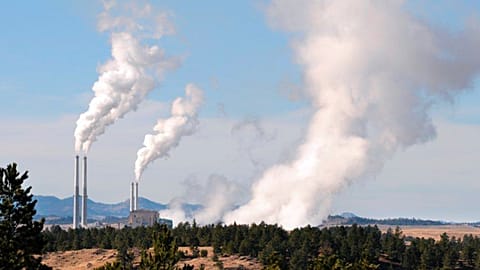Short unnecessary emails contribute as much CO2 each year as 3,334 diesel cars.
Just like our environment, our digital world has a huge amount of trash. It eats into precious storage space on our smartphones, laptops and tablets and wastes energy at the same time.
Earth Day is on 22 April 2023. There are events planned all over the world and lots of other great ways to mark the day.
But if you're not able to organise or attend an Earth Day event this year, having a digital cleanup is a free alternative that will make a difference to your carbon footprint.
Let's Do It World Network are asking people to reconsider the environmental impact of their unused files. On their list of targets is your email inbox and the constant spam that clogs it up.
“If each British adult would abstain from sending out a “Thank you” email, we would conserve more than 16 000 tons of CO2 per year - equal to 81,000 flights from London to Madrid. Are really all the emails we send necessary?” says Anneli Ohvril, one of Digital Cleanup Day's project leaders.
Sending unnecessary pleasantries by email has a cost
We've all found ourselves trapped in a pointless email chain of 'thank yous' at some point. Too polite to not send that two-word message, over 64 million unnecessary emails are sent by Brits each day, according to energy supplier OVO.
Almost three-quarters of people in the UK were completely unaware that these millions of messages could be increasing the carbon footprint of their inbox according to research commissioned by the supplier.
"Whilst the carbon footprint of an email isn't huge," said Mike Berners-Lee, emissions researcher and writer, "it's a great illustration of the broader principle that cutting out the waste in our lives is good for our wellbeing and good for the environment."
According to Berners Lee's book, The Carbon Footprint of Everything, a normal email has a footprint equivalent to 0.3 g of CO2 emissions. This can rise to 50g, however, with the addition of a large attachment. This figure looks at everything from the power in data centres to the computers that send, filter and read the messages.
Cutting down on the number of unnecessary emails you send is one way to reduce the CO2 emitted by your emails but the spam clogging up your inbox could also be a source of emissions. Over half of all email traffic is considered spam say figures from Statista. With 239.6 billion messages sent around the world, that's a lot of spam.
Deleting these messages frees up space on the servers that store email data and could help reduce the amount of CO2 produced by systems keeping us all online.
Download this free tool to remind you when not to send emails
OVO has created a tool which will notify you if it thinks your email is not needed and prompt you to be more thoughtful with what you send.
The 'Carbon Capper' Chrome extension looks at word count and notifies you if you try to send anything under four words.
"We want to show people how every action has a carbon impact, even a simple email," explained Katie Russell, Head of Data and Analytics at the company, "we need to change our behaviour at the entry level, and help people make a start with the easy first steps."
You can download the extension from the Chrome web store here and check whether you could cut down on your unnecessary carbon creating emails.




















